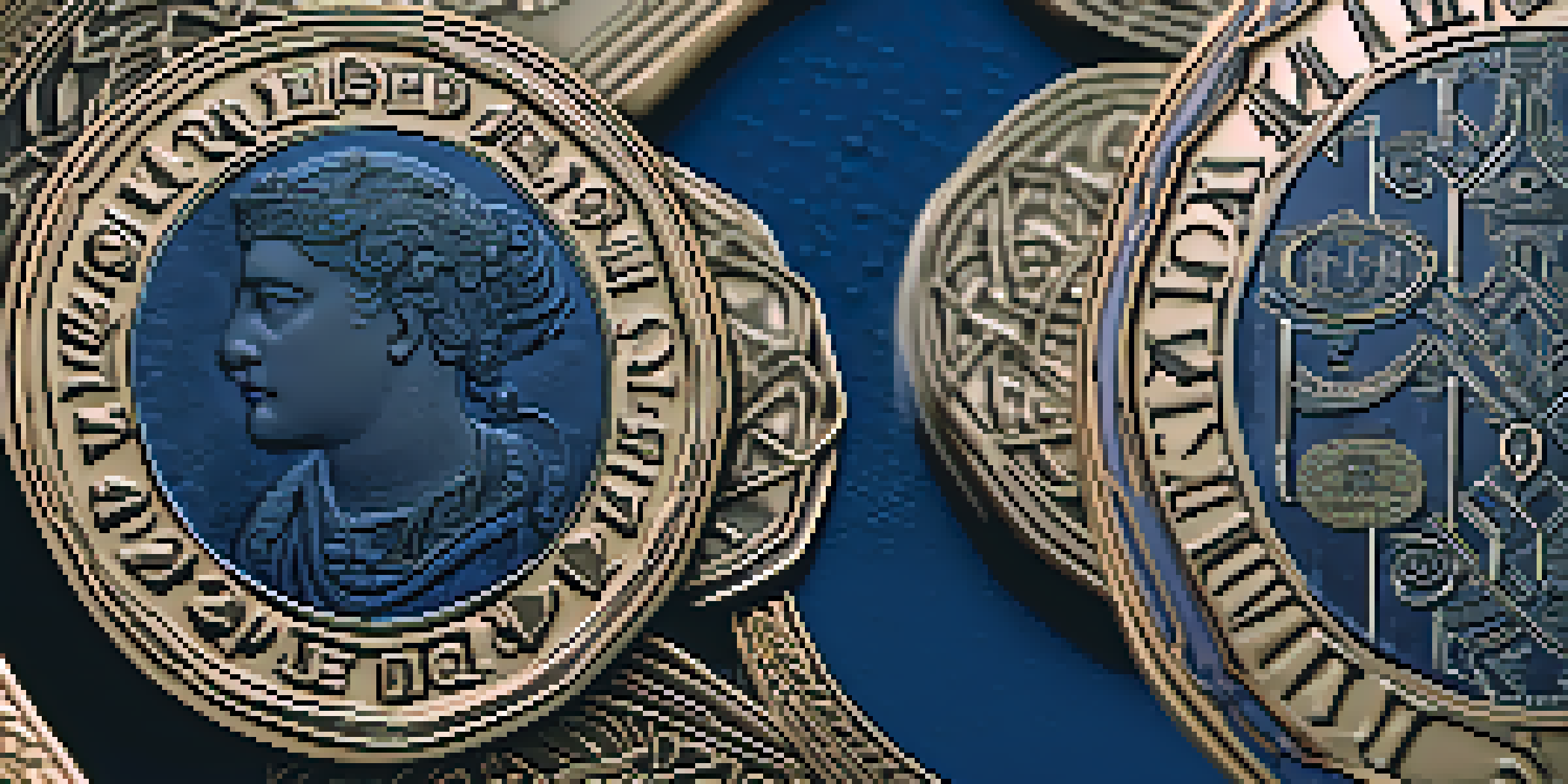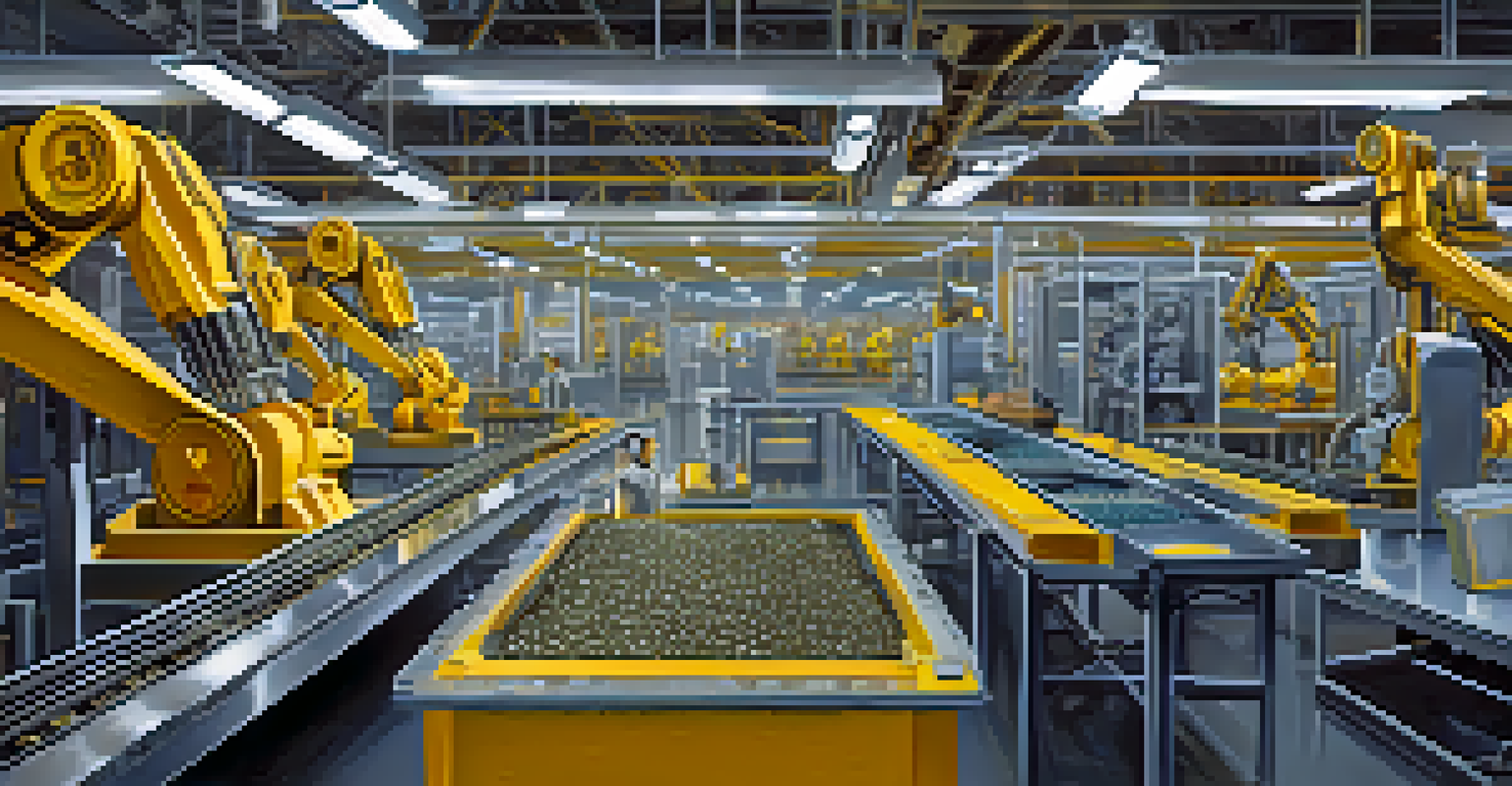Understanding Coin Minting Processes and Techniques

What is Coin Minting and Why It Matters
Coin minting is the process of producing coins for currency. This vital practice not only facilitates trade but also represents a nation’s economy and culture. Minting coins dates back thousands of years, providing a tangible connection to currencies of the past.
Coins are a way of preserving our history, our culture, and our identities.
Coins serve as a physical embodiment of value, often featuring intricate designs that tell stories of their nation’s heritage. Understanding the minting process helps us appreciate the craftsmanship and technology involved in creating these essential items. Every coin minted carries with it a piece of history and a promise of trust.
Moreover, the minting process has evolved over time, adapting to advances in technology and changes in market demand. By grasping the basics of coin minting, we can better understand the significance of currency in our daily lives.
The History of Coin Minting Techniques
The history of coin minting is rich and varied, beginning with ancient civilizations such as the Lydians, who minted the first coins around 600 BC. These early coins were made from electrum, a natural alloy of gold and silver, and featured stamped designs that indicated their authenticity. Over the centuries, different cultures adopted and modified minting techniques to suit their own needs.

In medieval Europe, for instance, the process became more sophisticated with the introduction of the screw press in the 15th century. This invention allowed for greater precision and uniformity in coin production, paving the way for modern minting techniques. Each advancement not only improved the quality of coins but also made counterfeiting more difficult.
Coin Minting Connects to History
Coin minting has a rich history that reflects the evolution of economies and cultures through various techniques and materials.
Today, we can see the influence of historical techniques in contemporary minting processes. Understanding this evolution gives us insight into how currency has shaped economies and societies throughout history.
Coin Minting: From Design to Production
The coin minting process begins with a design, often created by skilled artists who specialize in numismatic art. This design is crucial as it reflects the identity and values of the issuing authority, whether it’s a country or a private entity. Once approved, the design is transferred to a master die, which will be used to create the coins.
The future of money is digital, but the allure of physical coins remains timeless.
Next comes the production stage, where metal blanks are prepared and then struck using high-pressure minting machines. This process involves precise alignment to ensure that each coin is stamped accurately, preserving the intricate details of the design. The entire procedure is meticulously controlled to maintain quality and consistency.
After striking, coins are usually treated with finishes to enhance their durability and appearance. This combination of artistry and engineering is what results in the coins we use today, making the process fascinating and complex.
Materials Used in Coin Minting
The materials used in coin minting can vary widely, with each metal having unique properties that affect the coin's durability and value. Common metals include copper, nickel, and zinc, often combined to create alloys. For instance, the U.S. penny is primarily made of zinc, while the dime features a combination of copper and nickel.
Silver and gold coins, on the other hand, are often minted for collectible purposes or investment. These precious metals have intrinsic value and are sought after by collectors around the world. The choice of material not only impacts the coin's appearance but also its longevity and market demand.
Modern Techniques Enhance Production
Today’s coin minting utilizes advanced technology like laser engraving and robotics to improve efficiency and precision.
Understanding the different materials used in coin minting allows collectors and enthusiasts to appreciate the nuances of coin value and rarity. The metal composition plays a significant role in determining a coin's historical significance and investment potential.
Modern Coin Minting Techniques and Technology
Modern coin minting has embraced technology, leading to innovations like laser engraving and automated production lines. These advancements have increased efficiency and precision, allowing mints to produce coins at a much faster rate without sacrificing quality. For instance, laser engraving enables intricate designs that would be challenging to achieve by hand.
Robotics and computer-controlled machinery are now commonplace in mints around the world, streamlining the entire process from design to production. This has not only reduced costs but also minimized human error, resulting in a higher quality product. The integration of technology has transformed the industry, making it more adaptive to changing market demands.
As technology continues to evolve, we can expect to see further improvements in coin minting techniques. This ongoing transformation highlights the importance of staying current with industry trends for anyone interested in numismatics.
The Role of Government and Private Mints
Coin minting is primarily regulated by governments, which issue currency to maintain economic stability. National mints, like the U.S. Mint, are responsible for producing coins that are legal tender. These mints ensure that the coins meet specific standards for weight, size, and composition, maintaining public trust in the currency.
In contrast, private mints often focus on producing collectible coins or bullion rather than currency. These private entities can experiment with designs and materials, catering to collectors and investors who seek unique pieces. The relationship between government and private mints reflects a balance between regulation and creativity in the coin industry.
Challenges Facing Coin Minting
The industry must navigate rising production costs and the threat of counterfeiting while adapting to the growing trend of digital currencies.
Understanding the roles of both types of mints helps us appreciate the broader context of coin minting. Each plays a crucial role in the economy, influencing everything from inflation rates to collector markets.
Challenges in Coin Minting Today
Despite advancements, the coin minting industry faces several challenges, including rising production costs and the increasing popularity of digital currencies. As fewer people use cash for transactions, mints must adapt to changing consumer behavior while maintaining profitability. This shift raises questions about the future of physical currency.
Another challenge is counterfeiting, which has become more sophisticated with technological advancements. Mints are constantly innovating to develop anti-counterfeiting measures, such as advanced security features and materials that are difficult to replicate. Protecting the integrity of currency remains a top priority.

These challenges underscore the importance of innovation in the coin minting process. By addressing these issues head-on, the industry can ensure that coin minting remains relevant and trustworthy in an evolving financial landscape.